I. Introduction
Nestled amidst the rolling hills of Berkshire and Surrey, Windsor Great Park is a sprawling expanse of verdant landscapes, captivating history, and enduring royal connections. Encompassing over 5,000 acres, this majestic park has been a cherished jewel of the British crown for centuries, its story intricately interwoven with the grandeur of Windsor Castle and the rich tapestry of English history.
A. A Brief Overview of Windsor Great Park
Windsor Great Park is a Royal Park of exceptional beauty and historical significance. It is situated just south of Windsor Castle, the official residence of the British monarch, and stretches towards the towns of Ascot and Sunningdale. The park’s diverse terrain encompasses ancient woodlands, sweeping deer glades, serene lakes, and manicured gardens, all within a picturesque setting that has captivated visitors for generations.
B. The Significance of Windsor Great Park in British History
Windsor Great Park’s significance extends far beyond its scenic splendour. It is a testament to centuries of royal patronage, a living landscape that has witnessed the ebb and flow of British history.
- Windsor Guildhall Near Windsor Castle: Past and Today
- Also, read Windsor Castle Opening Times: Everything You Need to Know.
II. Historical Context
A. The Norman Transformation (11th-12th Centuries)

A Hunter’s Paradise: Following the Norman Conquest in 1066, William the Conqueror and subsequent Norman monarchs, like Henry I, recognized the vast Windsor Forest’s potential as a royal hunting ground. The forest’s abundant deer, boar, and other game provided them with a thrilling recreational pursuit and a symbol of their power and prestige.
A Strategic Choice for Windsor Castle: While William the Conqueror’s decision to build Windsor Castle in 1070 near the existing Windsor Forest wasn’t solely driven by hunting needs, the forest’s proximity undoubtedly played a significant role. The location offered strategic advantages, but it also provided convenient access to these established hunting grounds, solidifying the forest’s importance for the Norman royalty.
A Royal Sanctuary Takes Shape: Under successive Norman reigns, Windsor Forest underwent a significant transformation. It became increasingly enclosed and protected, transforming it into a royal sanctuary accessible only to the sovereign and their privileged guests. This involved defining clear boundaries for the forest and appointing gamekeepers to oversee wildlife management and conservation.
Grand Displays of Power: Royal hunts were elaborate events within the verdant landscapes of Windsor Forest. These spectacles showcased the monarch’s authority and the prowess of their court. They involved elaborate rituals, skilled huntsmen, and packs of hounds, with the nobility and clergy gathering to witness the chase.
Ecological Considerations: It’s important to acknowledge the potential impact of these frequent royal hunts on the wildlife population within the forest. While there may not be documented evidence of specific conservation practices, mentioning this potential impact provides a more balanced historical perspective.
Windsor Forest’s early history as a royal hunting ground has left an indelible mark on the landscape and heritage of Windsor Great Park. The Long Walk, a majestic three-mile avenue lined with ancient trees, reflects this history. While the concept might have originated as a hunting trail, the Long Walk itself wasn’t physically built until the 17th century under King Charles II. The park’s Deer Park, however, remains a sanctuary for these majestic creatures, a testament to the enduring legacy of the hunt.
- Also, read State Apartments at Windsor Castle: An Ultimate Guide.
- Windsor Great Park Stables: History and Today
- Also, read Windsor Castle Tickets: A Proven Comprehensive Guide.
- Queen Elizabeth Gardens in Salisbury, England
- The Old Court Arts Centre, Windsor’s History & Today
B. Medieval Times

1. Defining the Royal Domain: Enclosures and the Deer Park
The 13th century marked a significant shift for Windsor Forest. Under King Henry III’s reign (1216-1272), a series of enclosures began to define the boundaries of what would become Windsor Great Park, differentiating it from the broader expanse of Windsor Forest. This act aimed to protect and manage the surrounding lands, particularly those close to Windsor Castle. These enclosures not only ensured a sustainable supply of game for the monarchy’s future but also offered potential economic benefits like controlled timber harvesting or limited agricultural uses.
A crucial milestone occurred in 1240 with the establishment of Deer Park. This designated area within Windsor Great Park, encompassing roughly 500 acres, became a haven for red deer. The enclosed park provided a controlled environment for royal hunting while also ensuring the protection of these majestic creatures.
2. The Rise of Deer Management
As the park’s boundaries were established and the Deer Park designated, a sophisticated system of deer management likely emerged. “Parkers,” which refer to wardens or rangers, oversaw the park’s operations. They would have implemented measures to maintain a healthy deer population. These measures likely included:
- Population control: Regulating the number of deer through culling or other means to prevent overgrazing.
- Habitat Management: Ensuring sufficient food sources and suitable habitats within the park’s boundaries.
- Poaching Prevention: Measures to deter poaching and protect the deer population.
While specific documented evidence of these practices during this period might be limited, their implementation is logical considering the overall goals of park management.
3. A Royal Sanctuary Beyond Hunting
Beyond its role as a royal hunting ground, Windsor Great Park served as a sanctuary for leisure and recreation for the monarchy and their guests during the 13th century. The park’s verdant landscapes provided opportunities for various pursuits besides hunting, such as hawking (hunting with trained birds), fishing, and horseback riding. These activities offered a welcome respite from the confines of Windsor Castle and allowed the royals to connect with nature.
4. A Legacy of Transformation
The enclosures and management practices implemented during the 13th century laid the foundation for Windsor Great Park’s transformation from a vast hunting ground into a more defined and managed royal domain. This era marked a significant turning point in the park’s history, shaping its character and establishing its enduring significance as a royal sanctuary with economic and recreational purposes beyond just the hunt.
- Also, read Windsor Castle Changing of the Guard: Where History Coming Alive.
- Also, read The Windsor Castle Dogs.
- Also, read St. George’s Chapel at Windsor Castle in History & Today.
- Also, know about The Best Bits of Windsor Castle
C. Tudor and Stuart Eras

1. 16th Century: Renaissance Grandeur under Henry VIII
The reign of King Henry VIII (1509-1547) ushered in a period of transformation and expansion for Windsor Great Park. A passionate gardener and patron of the arts, Henry VIII introduced ornamental gardens within the park, adding a touch of Renaissance grandeur to the verdant expanse. These gardens, adorned with manicured lawns, vibrant flowerbeds, and statuesque fountains, reflected the king’s appreciation for beauty and desire to enhance the park’s aesthetic appeal.
2. 17th Century: Equestrian Pursuits under Elizabeth I
Queen Elizabeth I (1558-1603), an avid equestrian, further expanded the park’s recreational appeal by commissioning the construction of riding paths. These well-maintained trails, winding through the park’s woodlands and meadows, provided ample opportunities for the queen and her court to enjoy their passion for horsemanship. The addition of riding paths also made the park more accessible for horseback riding and leisure activities among the nobility and gentry.
- Also, read Windsor Castle Tour: A Comprehensive and Best Guide.
3. A Royal Canvas for Landscape Design
The Tudor and Stuart eras witnessed a growing appreciation for landscape design, and Windsor Great Park became a prime canvas for these artistic expressions. Landscape architects were commissioned by the monarch to enhance the park’s natural beauty. These designers employed sweeping vistas, avenues of trees, and serpentine lakes, transforming the park into a masterpiece of landscape design.
4. Expansion of Public Access
During the Tudor and Stuart periods, gradual steps were taken to expand public access to Windsor Great Park, allowing more people to experience its natural beauty and recreational opportunities. While the park remained primarily under royal control, residents and visitors were increasingly permitted to enjoy its pathways, woodlands, and meadows. This expansion of public access marked a shift towards a more inclusive approach to the park’s management.
5. A Legacy of Enhancement and Accessibility
The Tudor and Stuart eras left an enduring legacy on Windsor Great Park, transforming it from a primarily hunting ground into a place of beauty, recreation, and public enjoyment. The introduction of ornamental gardens, equestrian facilities, and landscape design elements enriched the park’s aesthetic appeal while making it a more inclusive space.
- Also, read Windsor Castle Tickets Advantage Card: Know Everything.
D. Georgian and Victorian Eras

The 18th and 19th centuries witnessed a renewed and intensified focus on landscape design and public access within Windsor Great Park. This era marked a pivotal transition as the park evolved from a primarily royal domain to a cherished public space, embracing the principles of picturesque landscape design and expanding its accessibility to a wider range of visitors.
1. Georgian Era: The Picturesque Landscape Movement
The Georgian era (1714-1830) was characterized by a surge of interest in the picturesque movement, which emphasized the creation of landscapes that mirrored idealized notions of natural beauty. Windsor Great Park became a prime canvas for this artistic expression, attracting renowned landscape architects like Lancelot “Capability” Brown. Brown’s designs transformed the park’s landscape, creating sweeping vistas, planting avenues of trees, and constructing serpentine lakes. These naturalistic elements enhanced the park’s visual appeal and accentuated its scenic grandeur.
- Also, read Queen Mary’s Dollhouse at Windsor Castle.
2. Victorian Era: Expanding Public Access
The Victorian era (1837-1901) witnessed a significant expansion of public access to Windsor Great Park. Under the reign of Queen Victoria, the park’s gates were opened to the public during daylight hours, allowing visitors to enjoy its natural beauty and recreational opportunities. This decision reflected the growing recognition of public parks as essential spaces for recreation, health, and social interaction.
3. The Rise of Leisure Activities
The Victorian era saw a proliferation of leisure activities within Windsor Great Park. Boating, fishing, and cycling became popular among visitors, and the park’s diverse landscapes provided ample opportunities for these activities. Adding picnic areas, playgrounds, and visitor centres further enhanced the park’s recreational appeal, attracting families and individuals from all walks of life.
4. A Legacy of Transformation and Inclusivity
The Georgian and Victorian eras left an indelible mark on Windsor Great Park, transforming it into a masterpiece of landscape design and a cherished public space. The park’s embrace of picturesque principles and expanding public access cemented its status as a beloved destination for recreation, relaxation, and connection with nature.
E. 20th and 21st Centuries

The 20th and 21st centuries have been marked by a continued commitment to preserving Windsor Great Park’s natural heritage and adapting it to the needs of modern society. Conservation efforts have focused on protecting the park’s diverse ecosystems. At the same time, educational programs have fostered a deeper understanding of its ecological importance. The park has also embraced modern recreational facilities, including cycle paths, visitor centres, and adventure playgrounds, catering to the diverse interests of its visitors.
1. Conservation and Environmental Stewardship
The Crown Estate, as the manager of Windsor Great Park, is committed to the long-term conservation of the park’s natural heritage. A team of dedicated staff oversees the park’s ecosystems, ensuring the protection of its diverse flora and fauna. Habitat management initiatives, such as woodland restoration and wetland conservation, are implemented to maintain the park’s ecological balance. The park’s conservation efforts also extend to reducing its environmental footprint. Sustainable practices, such as energy-efficient buildings, waste reduction programs, and renewable energy initiatives, are implemented to minimize the park’s environmental impact.
2. Educational and Cultural Initiatives
Windsor Great Park plays an active role in promoting education and cultural engagement. The park’s visitor centres offer a range of educational programs, workshops, and guided tours, exploring the park’s history, natural environment, and royal connections. These programs are designed to foster a deeper understanding of the park’s significance and inspire a sense of stewardship among visitors. The park also hosts various cultural events, such as art exhibitions, musical performances, and theatrical productions. These events allow visitors to engage with the park’s unique character and appreciate the region’s diverse cultural heritage.
3. Modern Recreational Facilities and Accessibility
To cater to the evolving needs of its visitors, Windsor Great Park has embraced modern recreational facilities and enhanced accessibility. The park’s extensive network of footpaths, bridleways, and cycle paths has been expanded and improved, offering visitors various options for exploring the park’s diverse landscapes. Picnic areas, playgrounds, and visitor centres have been upgraded and expanded to provide comfortable and informative spaces for visitors to relax, learn, and enjoy the park’s amenities. Additionally, the park has implemented measures to improve accessibility for disabled visitors, ensuring that everyone can experience the beauty and recreation opportunities Windsor Great Park offers.
- Also, read Devastating Timeline of the Windsor Castle Fire 1992.
4. Community Engagement and Economic Impact
Windsor Great Park plays a significant role in fostering community engagement and contributing to the local economy. The park’s recreational facilities, educational programs, and cultural events attract visitors from near and far, generating revenue for local businesses and contributing to the region’s tourism industry. The park also provides employment opportunities for residents directly through its management staff and indirectly through supporting businesses. Additionally, the park’s open spaces and natural beauty contribute to residents’ overall well-being and quality of life in the surrounding communities.
5. A Legacy of Preservation and Adaptation
The 20th and 21st centuries have witnessed a remarkable transformation of Windsor Great Park, balancing its rich heritage with the demands of modern society. The park’s commitment to conservation, education, and accessibility has ensured its continued relevance and significance in the 21st century. As the park looks to the future, it will continue to adapt and evolve, preserving its natural beauty while embracing new technologies and trends to enhance the visitor experience and foster a deep connection between people and nature.
III. Windsor Great Park: A Tapestry of Nature and Heritage
Encompassing over 5,000 acres (2,023 hectares), Windsor Great Park is a testament to the harmonious blend of nature and heritage. From the majestic Long Walk to the tranquil Valley Gardens, the park offers visitors a captivating tapestry of experiences to explore and cherish.
A. The Long Walk

Visitors can envision the centuries of royal processions traversing this historic path by strolling along the Long Walk, a three-mile (4.8 kilometre) avenue lined with three rows of elm trees. The Long Walk offers breathtaking vistas of Windsor Castle, rising majestically at its western end.
B. The Deer Park

The Deer Park, a sanctuary for over 500 red deer, lies within the park’s vast expanse. These majestic creatures, with their distinctive antlers, have roamed the park for centuries, and their presence adds a touch of regal charm to the landscape. The Deer Park, spanning approximately 500 acres (202 hectares), has long been associated with royal traditions, and visitors can still observe the annual deer round-up held in the fall or winter. This time-honoured practice ensures the health and vitality of the herd.
C. The Savill Garden

A horticultural masterpiece, the Savill Garden showcases a captivating blend of formality and natural beauty. Designed in a traditional English style, the Savill Garden features meticulously arranged flower beds, herbaceous borders bursting with colour, and mature trees, providing a sense of grandeur. Spanning 30 acres, the diverse habitats, including woodlands, meadows, and lakes, create a haven for wildlife, attracting nature enthusiasts.
- Also, read The Windsor Castle Fire 1992: A Historical Catastrophe.
D. Virginia Water

Virginia Water, a serene lake spanning over 100 acres (40 hectares), is Windsor Great Park’s centrepiece. This picturesque lake, adorned with islands and follies (small ornamental buildings), offers a tranquil retreat for visitors seeking relaxation and recreation. Boating, fishing, and birdwatching are popular activities on the lake. At the same time, the surrounding pathways provide ample opportunities for strolls and scenic bike rides.
E. The Valley Gardens: A Tranquil Oasis with Stunning Flora and Fauna

Descend into the tranquil embrace of the Valley Gardens, a secluded oasis within Windsor Great Park. This verdant haven, nestled amidst towering trees and meandering streams, offers a tranquil escape from the hustle and bustle of everyday life. Spanning approximately 12 acres (5 hectares), visitors can wander the garden’s winding paths, admiring the stunning flora and fauna, from vibrant azaleas to cascading waterfalls. The Valley Gardens provide a sanctuary for contemplation and connection with nature’s beauty.
- Also, read The Windsor Castle Fire Salvage Operation 1992.
IV. Windsor Great Park and Windsor Castle: An Enduring Connection
The park’s history is deeply intertwined with the royal family, serving as a royal hunting ground for centuries. The vast expanse and abundant wildlife provided ample opportunities for the chase, a recreational pursuit and a symbol of power and prestige for the Norman monarchs. The park also served as a place of leisure and recreation for the monarchy, with its verdant landscapes providing hawking, fishing, and riding opportunities.
Windsor Great Park has played a significant role in royal ceremonies and celebrations. The park’s Long Walk, a three-mile avenue lined with ancient trees, has been a grand procession route for centuries. Coronation processions, royal weddings, and other momentous occasions have unfolded along this majestic avenue, showcasing the enduring connection between the park and the monarchy. The park’s diverse landscapes have also provided a picturesque backdrop for royal celebrations and events. The Savill Garden, a horticultural masterpiece within the park, has hosted lavish garden parties and outdoor receptions. The park’s tranquil lakes and woodlands have served as settings for royal picnics, polo matches, and other outdoor gatherings.
Windsor Great Park surrounding Windsor Castle enhances the castle’s grandeur and creates a harmonious ensemble. The park’s verdant expanses and sweeping vistas provide a picturesque setting for the castle, complementing its architectural magnificence. The park’s natural beauty extends the castle’s grandeur beyond its walls, creating a unified landscape that embodies the majesty of the British monarchy. The park’s diverse ecosystems and wildlife contribute to the castle’s allure. The sight of red deer roaming freely within the park adds a touch of regality to the landscape. At the same time, the songs of birds and the rustling of leaves in the trees provide a serene backdrop for the castle’s imposing presence.
- Also, read The Extent of Damage to Windsor Castle Due to the 1992 Fire.
- Also, read Restoration of Windsor Castle after Devastating Fire in 1992.
V. The Park’s Economic and Social Impact on the Local Community
Windsor Great Park plays a significant role in fostering community engagement and contributing to the local economy. The park’s recreational facilities, educational programs, and cultural events attract visitors from near and far, generating revenue for local businesses and contributing to the region’s tourism industry. The park also provides employment opportunities for residents directly through its management staff and indirectly through supporting businesses. Additionally, the park’s open spaces and natural beauty contribute to residents’ overall well-being and quality of life in the surrounding communities.
A. Key Economic Indicators
- Annual visitor spending: Over £50 million
- Direct employment: Over 100 full-time equivalent positions
- Indirect employment: Estimated 500 additional jobs supported by park-related activities
- Contribution to local GDP: Estimated £100 million
B. Social Impact Indicators
- Increased community engagement: Over 100,000 participants in educational and cultural programs annually
- Improved physical and mental health: Regular park visitors report higher levels of physical activity, reduced stress, and improved mental well-being
- Enhanced sense of community: The park serves as a gathering place and focal point for social interaction among residents
- Promotes environmental stewardship: Park visitors gain a greater appreciation for nature and conservation through educational programs and interactions with the park’s natural beauty




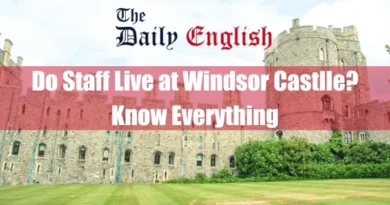
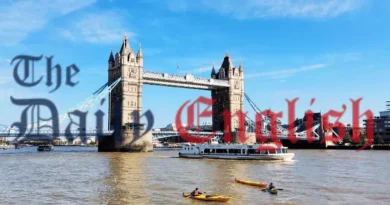
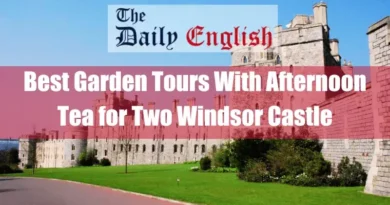
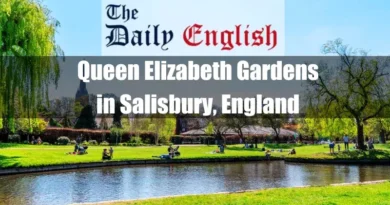
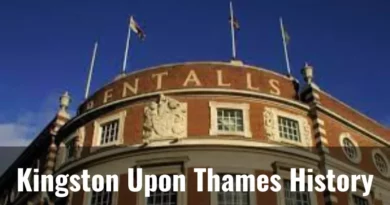
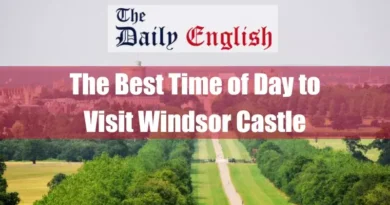
Comments are closed.